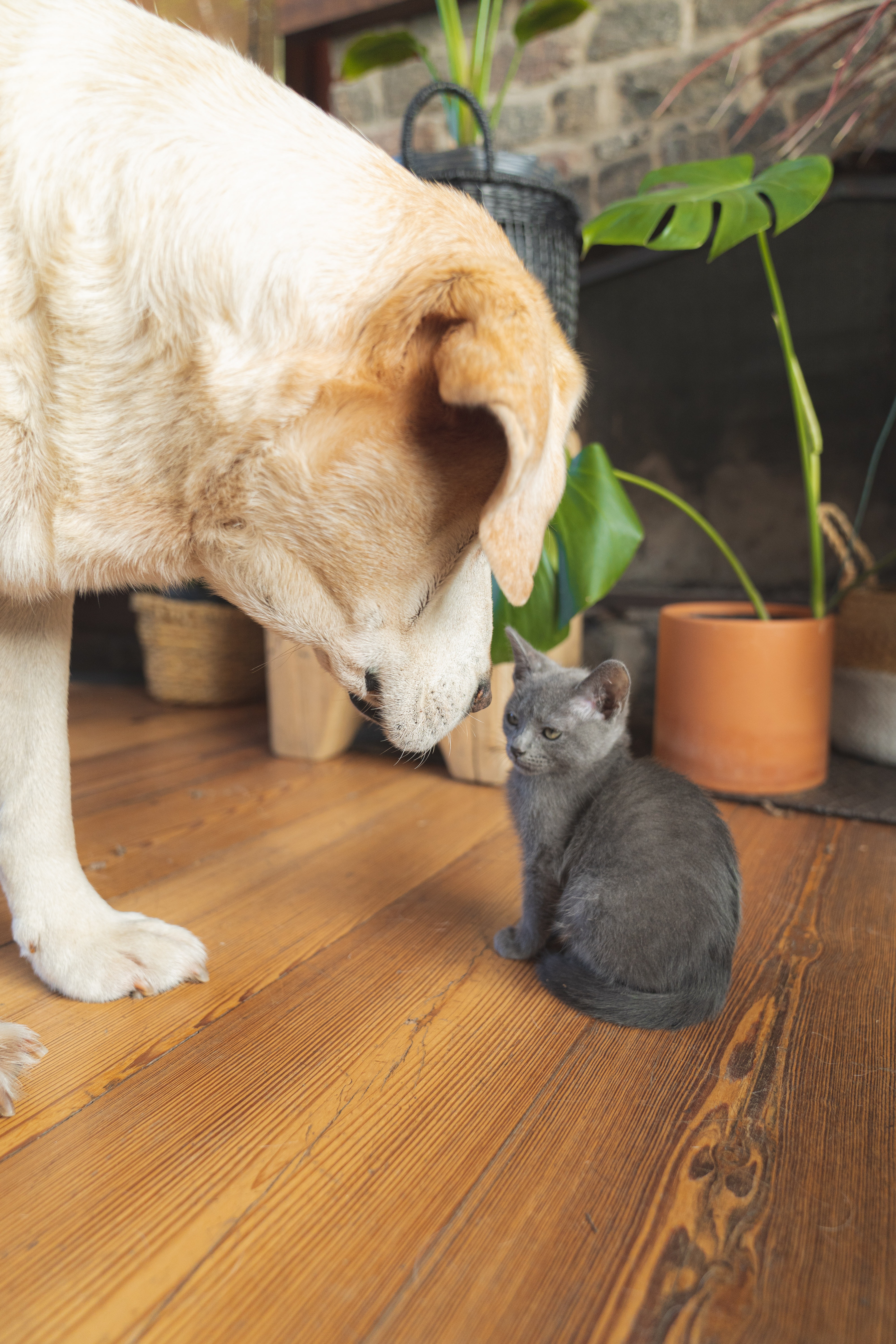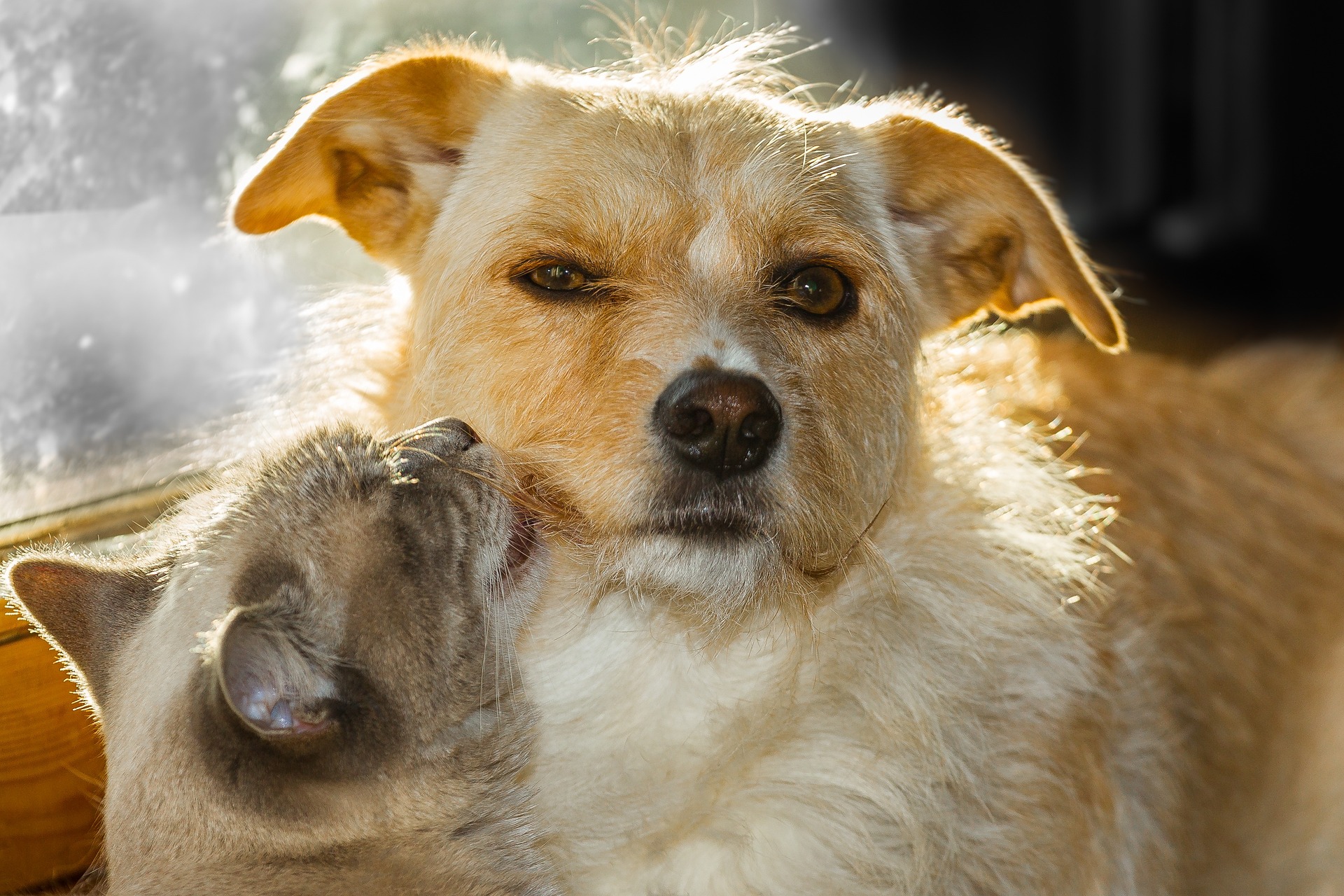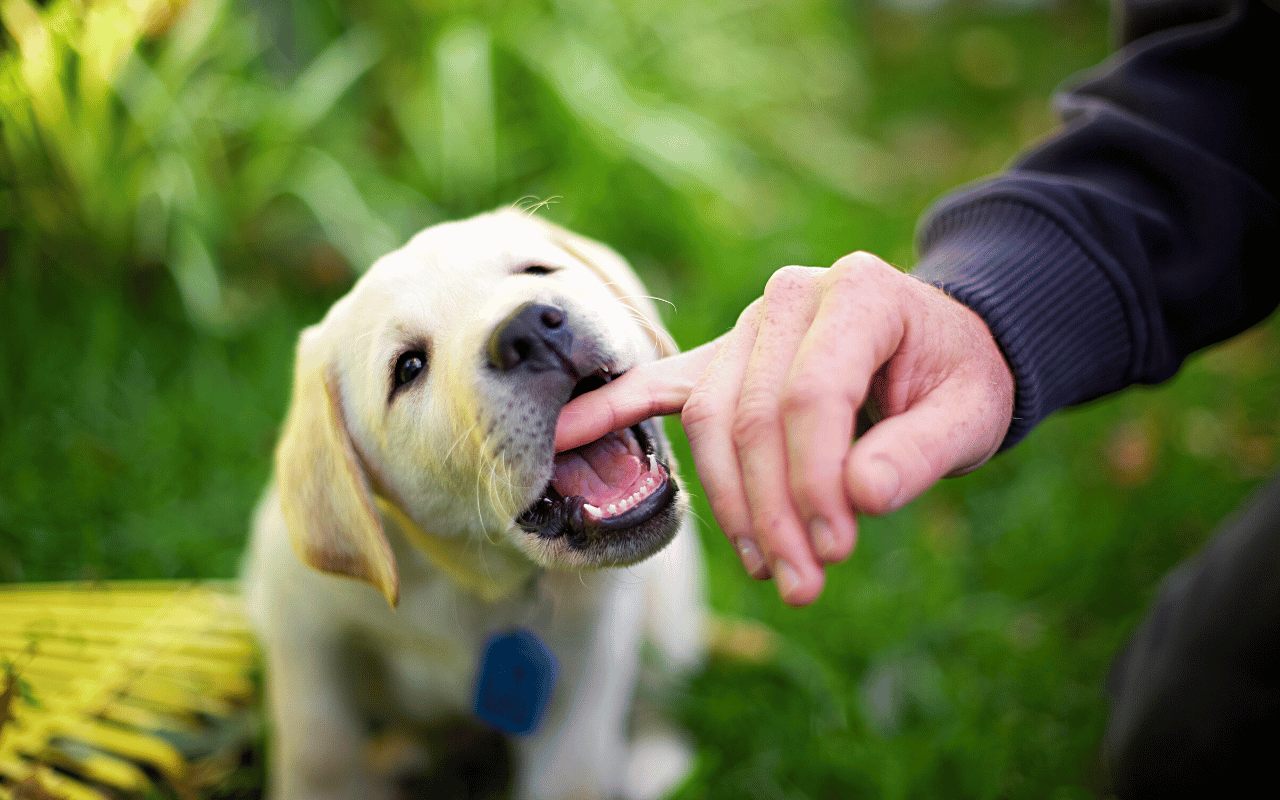How To Introduce A Labrador To Cats
Are you wondering how to introduce a Labrador to cats? Are you worried about the safety of both of your pets during the introduction process? Do you want to ensure that your Labrador and cats become fast friends?
Introducing a new pet to your home is always a thrilling experience. However, it can be difficult to ensure that the introduction goes smoothly. This is especially important when introducing cats and dogs that have never been around each other before.
If you’re thinking about bringing a Labrador Retriever into your home with existing cats, here are some tips for a successful introduction. By following these simple guidelines, you’ll have peace of mind knowing that both of your pets will get along well in their shared home environment.
Prepare The Living Space
Preparing the living space before introducing a Labrador to cats is essential for successful integration and ongoing harmony between the two species. It’s important to ensure that each pet has its own space in the home and access to food, water, and comfortable sleeping areas.
Start by establishing separate areas for your Labrador and cats. You should provide plenty of toys for both pets, such as interactive toys for your Lab and scratching posts or cardboard boxes for your cats. Make sure there are several resting spots away from one another. So that both pets can get some alone time if necessary. Keep their supplies, such as food bowls and litter box, separated as well.
You should also invest in odor-removal products that can help make the transition smoother for both animals. Urine marking is common in cats when they feel threatened or anxious. Therefore, using enzymatic cleaners can help prevent them from scent-marking around the home.
Additionally, providing treats during the first few weeks of introduction can also be beneficial in encouraging positive behavior in both cats and Labs.
Take Things Slow & Put Safety First
The most important rule for introducing cats to Labradors (or any other dog breed) is to go slowly and not rush the process. When first bringing them together, let them sniff each other while a door or gate separates them.
Allow the animals to get used to seeing, hearing, and recognizing one another before attempting any further contact.
It’s also important that all animals remain safe during the introduction. Make sure someone is there if things get out of hand. Even if you think your Labrador puppy and cat are well-socialized already. Mistakes do happen, and fights may occur when being introduced to a new environment.
Give Them Safe Space
Cats feel safer in small, tight spaces because it gives them more control over their environment, making introductions less stressful for both parties involved. Try having the new cat in an area where it can access higher areas, such as bookshelves or tall counters nearby. Therefore, it can jump away from the situation if needed.
You should also avoid having your Labrador wander around freely until everyone has had enough time to adjust and familiarize themselves with one another safely.
Positive Reinforcement & Rewards
No matter how good-natured your pets are, it’s normal for animals to fear those they haven’t encountered before. It’s a good idea to create positive associations between them through rewarding behavior with treats or verbal praise through positive reinforcement. Every interaction should be treated as an opportunity for learning. Good rewarding behavior will help keep things running smoothly on both ends! Treats, toys, and verbal praise can help create positive associations between the pets, reducing the likelihood of conflicts or aggression.
Furthermore, providing rewards as soon as a desirable behavior is displayed can encourage the pet to behave in this manner more often. When rewarding with treats, ensure that both animals receive an equal amount so neither pet feels neglected or threatened. The treats should be given simultaneously, so there’s no reward competition.
You should also give the treat at the same time that positive behavior is displayed—such as when they approach one another without showing signs of aggression—so they associate good behavior with a reward. Verbal praise is also an important part of positive reinforcement when introducing cats and Labradors to one another.
Verbal cues such as “good” and “yes” can help reinforce desired behaviors while simultaneously calming down both animals if tensions start to rise during introductions. It’s important to remain calm throughout the process. Do not get angry or raise your voice if things don’t go according to plan. This will only increase tension between the two species further.
Playtime Is Essential
Playing with toys is one of the best ways to get two animals accustomed to each other quickly and easily. This encourages communication and builds trust between the two.
Whenever possible, let them play together, provided no one gets too overwhelmed or pushed beyond what they can handle. This allows them to better understand each other without feeling threatened or scared in the process!
The key here is patience. Don’t expect immediate results, but rather allow both animals time to become used to their new surroundings before assuming any kind of regular interactions between the two species!
Allow Them Both to Defend (Within Reason)
When introducing a Labrador to cats, it’s important to ensure both pets have the opportunity to defend themselves if necessary. While it’s unlikely that either pet will attempt to harm the other, some animals may still feel uncomfortable or anxious with their new environments and need time to adjust.
If there are any signs of aggression or fear between the two animals, it’s best to separate them immediately and start the introduction process over again.
It is also important to be sure that your Labrador knows not to engage in any aggressive behaviors toward cats. This can include leaping, lunging, barking, growling, baring teeth, and chasing. Positive reinforcement techniques can help train your Lab to understand that behavior around cats should be calm and gentle so as not to cause any further distress.
Cats may also display defensive posturing, such as arching their backs, puffing up their fur, and swiping at their opponents as a warning sign before aggression. Owners of both species need to be aware of these signals and intervene promptly if things become too heated.
Practice Patience
Practicing patience is essential when introducing a Labrador to cats. It can take some time for the two animals to get used to each other and become comfortable in the same space. During this adjustment period, it’s important to ensure all interactions are kept positive and free from any negative associations.
This means rewarding good behavior with treats or verbal praise and avoiding any physical reprimands or consequences. Allowing the animals to move at their own pace is key. Don’t push them beyond what they can handle or expect immediate results.
If there are signs of aggression or fear between the two species, it’s best to separate them immediately and start the introduction process over again.
This process can take anywhere from days to weeks, depending on how quickly they adjust. However, with enough patience and understanding from everyone involved, you are sure to have a successful outcome!
Why Owning a Labrador and Cats Can Work Well
While it may seem daunting to imagine cats and dogs living together, a Labrador and a cat can, in fact, make the perfect companions. Owning both animals can be immensely rewarding, provided the introduction process is done right.
🐕 Companionship
Labradors are usually friendly and sociable dogs that love to please their owners, making them ideal companions for cats. The playful nature of Labradors also provides cats with an activity partner and someone they can communicate with using body language or vocalizations – especially when they’ve become comfortable around one another.
🐈 Exercise
Having both a cat and a Labrador in the household will ensure your pets get enough exercise daily. The energetic personalities of Labradors require plenty of activities like jogs, hikes, or simply playing catch in the backyard.
With four legs instead of two, cats have enough stamina to keep up with their canine counterparts during playtime – resulting in both animals’ better physical health from regular exercise!
🐕 Intelligence
The intelligence levels of Labradors are way higher than most breeds. This makes them great for training because they can understand commands quickly. In time, this will help teach your kitten how to obey rules as well. Plus, you can achieve teaching boundaries such as not scratching furniture by having a smart dog like a labrador lead by example.
Frequently Asked Questions
Q: Can I introduce my German Shepherd and Golden Retriever to a cat?
A: Introducing your German Shepherd and Golden Retriever to a cat can be tricky. It’s important to take things slowly and ensure the animals have time to adjust to each other in a safe, controlled environment. It’s best to start with short, supervised visits before attempting a full introduction. Be sure to pay close attention to each animal’s body language and intervene if things seem to be going poorly. With patience and preparation, you should be able to get your furry friends accustomed to one another in no time!
Q: Is introducing a new puppy to a resident cat a good idea?
A: Introducing a new puppy to a resident cat can be tricky. But if done properly, it could lead to a long and loving relationship between the two animals. It is important to give the cat plenty of space and time to adjust to their new companion before offering them opportunities for play and interaction. A slow-paced introduction should involve plenty of treats, praises, and rewards for both parties that comply with the implementation of commands from the pet owner. Introducing a new puppy should not be rushed but should instead progress gradually until both animals are comfortable with each other’s presence. Doing this initially will help break down any preconceived negative ideas either animal might have about the other, leading the way to enjoying years of companionship.
Q: Do I need a different approach when introducing an older cat to an adult dog?
A: Introducing an older cat to an adult dog can be a bit more complicated than introducing a puppy, as the two animals are likely to have more established personalities and behavioral patterns. You will want to take extra care to ensure that the environment is safe for both animals and that there is enough space for them to have their own personal area.
Q: Do I need to hire a dog trainer to teach basic commands to my Labrador?
A: Teaching your Labrador basic commands can be done by you at home. However, consider hiring a professional dog trainer if you’re looking for more guidance and structure. A certified dog trainer can help your Labrador learn commands efficiently and effectively, ensuring that they understand and obey them properly. They will also provide guidance on how to properly introduce the Labrador to your cat in a safe and stress-free manner.
Q: What cat breeds are most compatible with Labradors?
A: Cats from all breeds can be compatible with Labradors. However, some breeds may require more introduction and patience from the pet owners. Breeds such as Ragdolls, Exotics, and Maine Coons are likely to be more accepting of the Labrador due to their laid-back and affectionate nature.
Final Words
Introducing a Labrador to cats can be intimidating, but with proper guidance and patience, it can be successful. It’s important to establish clear boundaries for both the cat and dog to keep them safe and secure. A successful introduction should occur over multiple short visits of increasing length. You are gradually allowing the animals to become accustomed to each other’s presence. With positive reinforcement and gentle reassurance during the entire process, your Labrador should soon become friends with your furry feline companions!











